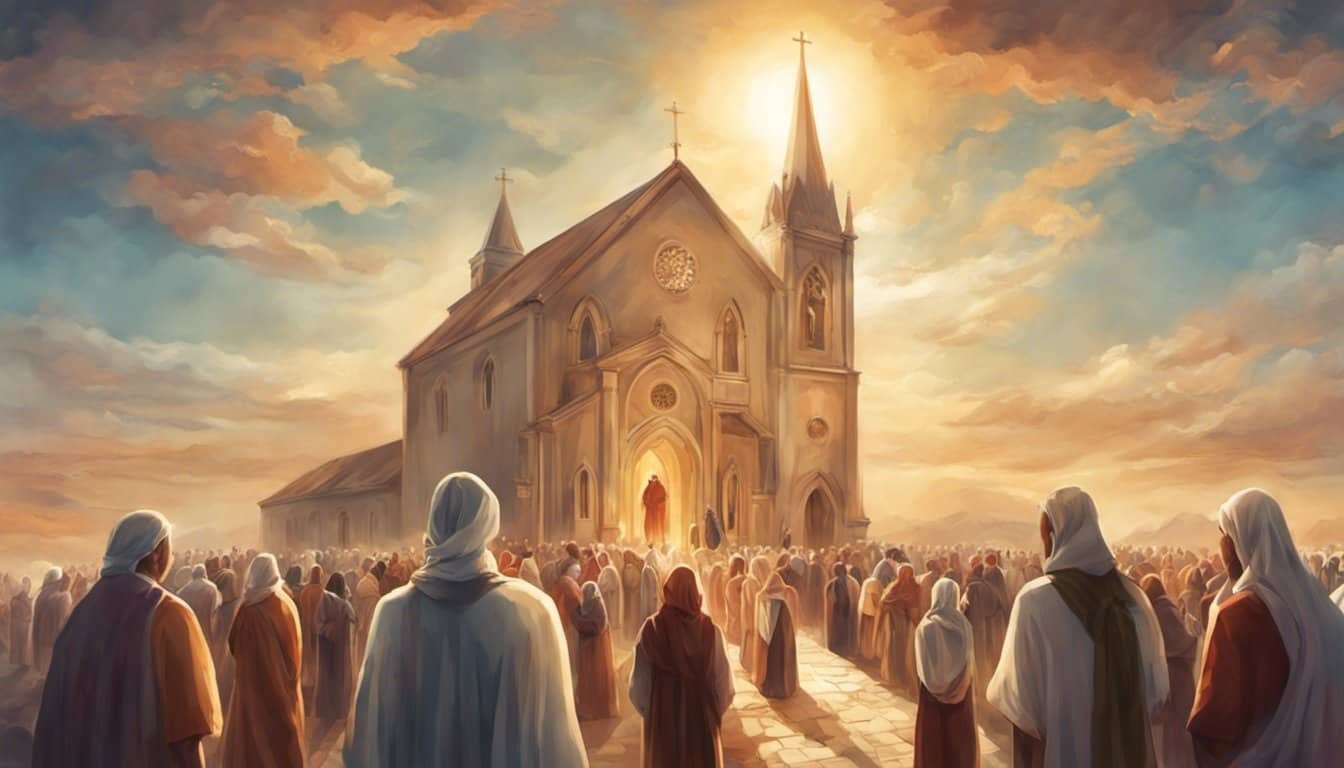When I first delved into the Old Testament, I was amazed by its rich tapestry of history, poetry, and prophecy. It’s not just a religious text but a collection of stories that have shaped cultures and beliefs for millennia. From the creation narrative to the trials of Job, every page brims with intriguing details and profound lessons.
Whether you’re a seasoned reader or just curious, uncovering the lesser-known facts about the Old Testament can be a fascinating journey. Did you know that the oldest parts of the Old Testament date back over 3,000 years? Or that it was originally written in Hebrew, with some sections in Aramaic? Join me as we explore some captivating facts that might just change the way you see this ancient text.
Overview of the Old Testament

The Old Testament is a foundational text filled with rich narratives, historical accounts, and profound poetry.
Key Themes and Narratives
The Old Testament includes themes like covenant, law, prophecy, and wisdom. The covenant theme appears with figures such as Abraham and Moses. The law, detailed in books like Leviticus and Deuteronomy, provides guidelines for living. Prophecies foretell events and offer insight into God’s plans, while books like Psalms and Proverbs share wisdom and poetic reflections.
Historical Context

The Old Testament spans about 1,000 years. It begins with creation narratives, moves through the establishment of Israel, and ends with the return from Babylonian exile. Key events include the Exodus from Egypt (around 13th century BCE) and the Babylonian exile (6th century BCE). Written in Hebrew and Aramaic, these texts reflect the culture, traditions, and societal norms of the ancient Near East.
Fascinating Old Testament Facts
The Old Testament holds countless intriguing stories and figures that continue to captivate readers. Its rich tapestry of narratives, laws, and prophecies makes it an essential part of biblical study.
Major Figures and Their Significance
Adam and Eve kick off the human story with their creation and subsequent fall from grace. They set the stage for redemption. Then there’s Noah, who builds the ark and survives the flood. Noah’s story highlights obedience and faith.
Abraham, the father of many nations, shows God’s promise and covenant. His willingness to sacrifice Isaac, his son, demonstrates unwavering faith. Next, Moses leads the Israelites out of Egypt. His story includes the parting of the Red Sea and receiving the Ten Commandments.
David, the shepherd boy who becomes king, exemplifies bravery and trust in God. He defeats Goliath and expands the kingdom of Israel. Plus, his psalms inspire worshippers to this day. Solomon, David’s son, builds the First Temple. Known for wisdom, Solomon’s Proverbs offer deep insights into life and faith.
Lesser-Known Stories
Ever heard of Ehud? This left-handed judge delivers Israel from Moabite oppression, showcasing clever tactics. Or consider Jael, who drives a tent peg through a general’s head, aiding Israel.
Huldah, a prophetess, confirms the authenticity of the Book of the Law found in the temple. Her recognition underpins the reformation led by King Josiah. Also, Micaiah stands firm against false prophets, predicting disaster for King Ahab, highlighting integrity.
Gomer, Hosea’s wife, symbolizes Israel’s unfaithfulness to God. Her story underscores redemption and divine love. Rizpah, a concubine of Saul, guards her sons’ bodies after execution. Her vigilance prompts a royal decree, ensuring proper burials.
These figures and tales offer rich lessons in faith, obedience, and divine providence. The Old Testament’s lesser-known stories add depth to our understanding and reflection.
By exploring these people and stories, we uncover layers of meaning and faith in the Old Testament.
Archaeological Discoveries Related to the Old Testament

Archaeology has unearthed fascinating insights that align with the Old Testament. Let’s dive into some significant findings that bring these ancient texts to life.
Important Artifacts
Artifacts play a crucial role in verifying biblical narratives and shedding light on the historical context. Here are a few notable ones:
- The Dead Sea Scrolls: Found in the Qumran Caves near the Dead Sea, these scrolls include some of the oldest known manuscripts of the Hebrew Bible. They date back to the third century BCE and offer valuable insight into early Jewish practices and beliefs.
- The Mesha Stele: Discovered in 1868 in Jordan, this inscribed stone dates around 840 BCE. It recounts the victories of King Mesha of Moab over Israel, corroborating the biblical account in 2 Kings 3.
- The Silver Amulet Scrolls: Excavated in Jerusalem’s Hinnom Valley, these small silver scrolls date back to the seventh century BCE. They include the priestly blessing from Numbers 6:24-26, proving the antiquity of this scripture.
Insight from Archaeological Sites
Several archaeological sites provide a backdrop to Old Testament stories. Each site highlights the intersection between history and theology:
- Jericho: Excavations at Jericho reveal city walls dated to around 1400 BCE, a timeline consistent with the biblical account of its conquest by Joshua in the Book of Joshua. Layers of destruction and subsequent rebuilding illustrate the city’s turbulent history.
- King David’s Palace: In Jerusalem, archaeologists unearthed a large structure believed to be King David’s palace from the tenth century BCE. This finding strengthens the historical credibility of the united monarchy described in Samuel and Kings.
- The City of Lachish: Inscriptions and ruins at Lachish, an important city in Judah, echo the biblical accounts of its conquest by Assyrians during King Hezekiah’s reign. In 2 Kings 18, the Assyrian siege of Lachish is detailed, aligning with the archaeological evidence.
Conclusion
With these artifacts and sites, we see how archaeology brings ancient scriptures into vivid focus. The historical layers uncovered enhance our understanding and appreciation of the Old Testament’s depth and authenticity. Such discoveries invite us to delve deeper into these sacred texts, with a renewed sense of wonder and respect for their enduring significance.
Impact of the Old Testament on Modern Society
How does an ancient text like the Old Testament continue to influence our modern world? Let’s explore its lasting cultural and religious impacts.
Cultural Influence
The Old Testament shapes many aspects of Western culture. From literature to art, its stories resonate deeply. Remember reading about Noah’s Ark in school or watching a film adaptation of the Exodus? These biblical tales are everywhere. Artists like Michelangelo and Rembrandt created masterpieces inspired by Old Testament scenes, from the Creation of Adam to the Sacrifice of Isaac.
« How Many Old Testament Laws Still Matter? Discover the Shocking Answer
Hebrew Scriptures vs Old Testament: Shocking Differences You Never Knew About »
Let’s not forget language. Ever used phrases like “the wisdom of Solomon” or “David and Goliath”? They come straight from Old Testament narratives. Even legal systems aren’t untouched, as the Ten Commandments laid foundational principles that influenced Western laws. For example, laws against theft and murder echo Old Testament commandments.
Religious Influence
Religiously, the Old Testament is monumental. It’s sacred to Jews, Christians, and Muslims alike. Synagogues, churches, and mosques teach its lessons. For Christians, it’s part one of the Bible’s divine revelation, setting the stage for the New Testament. Stories of faith, struggle, and prophecy in the Old Testament build the foundation for understanding the Christian faith.
In Judaism, it’s the Torah—the core of Jewish belief and practice. It offers a blueprint for ethical and religious conduct. Muslims respect the Old Testament prophets, considering them key figures in Islam. Abraham, Moses, and David are honored in the Quran, reinforcing the Old Testament’s wide-reaching influence.
Seen in these ways, the Old Testament isn’t just an ancient text. It’s a living document, influencing our cultural norms, language, legal systems, and religious beliefs—shaping modern society more than we often realize.
Conclusion

Exploring the Old Testament is like taking a journey through time. It’s packed with stories that have shaped our world in countless ways. From the wisdom of Solomon to the bravery of lesser-known figures like Jael, each story offers valuable lessons.
The archaeological finds like the Dead Sea Scrolls add another layer of fascination, giving us a glimpse into ancient Jewish life. It’s amazing how these ancient texts continue to influence our culture, legal systems, and religious beliefs today.
So whether you’re diving into it for the first time or revisiting familiar stories, the Old Testament has something to offer everyone.
Frequently Asked Questions
What is the Old Testament?
The Old Testament is a collection of ancient religious texts central to Judaism, Christianity, and Islam. It includes historical, poetic, and prophetic writings, offering foundational stories, laws, and teachings.
Who are key figures in the Old Testament?
Key figures include Abraham, Moses, Adam, Eve, Noah, David, and Solomon. These individuals symbolize different aspects of faith and virtue in their stories.
What are some themes in the Old Testament?

The Old Testament explores themes such as creation, covenant, faith, obedience, sin, and redemption. These themes are reflected in various narratives and laws.
In what languages was the Old Testament originally written?
The Old Testament was primarily written in Hebrew, with some portions in Aramaic. These languages were commonly used in ancient Israel and surrounding regions.
What historical events are covered in the Old Testament?
Significant historical events include the Exodus from Egypt, the Babylonian exile, and the conquests of Canaan. These events shaped the identity and beliefs of ancient Israel.
What are some archaeological discoveries related to the Old Testament?
Important archaeological finds include the Dead Sea Scrolls and the Mesha Stele. These artifacts provide valuable insights into early Jewish practices and the historical context of the Old Testament.
How does the Old Testament impact modern society?
The Old Testament influences Western culture, language, and legal systems. It also holds significant religious importance for Jews, Christians, and Muslims, shaping their beliefs and practices.
Are there lesser-known figures in the Old Testament?

Yes, lesser-known figures like Ehud, Jael, and Micaiah play crucial roles. Their stories offer unique lessons in faith, obedience, and God’s sovereignty.
Why is the Old Testament important in literature?
The Old Testament’s narratives, themes, and characters have inspired countless works of literature, art, and philosophy, contributing to its enduring cultural significance.
















